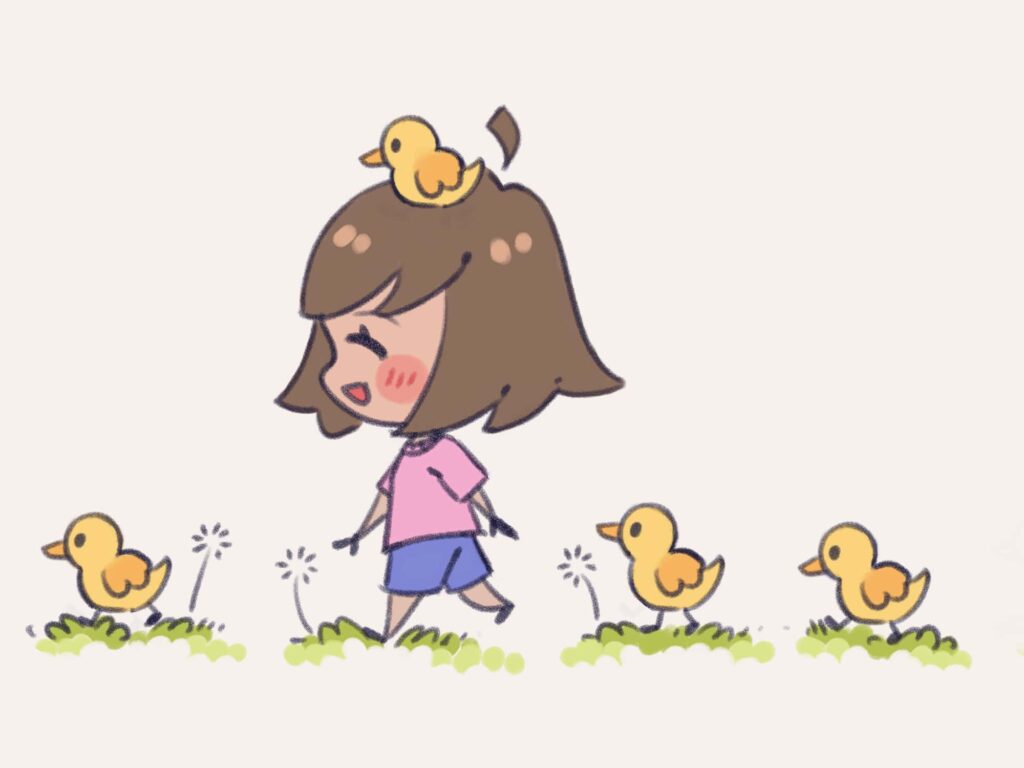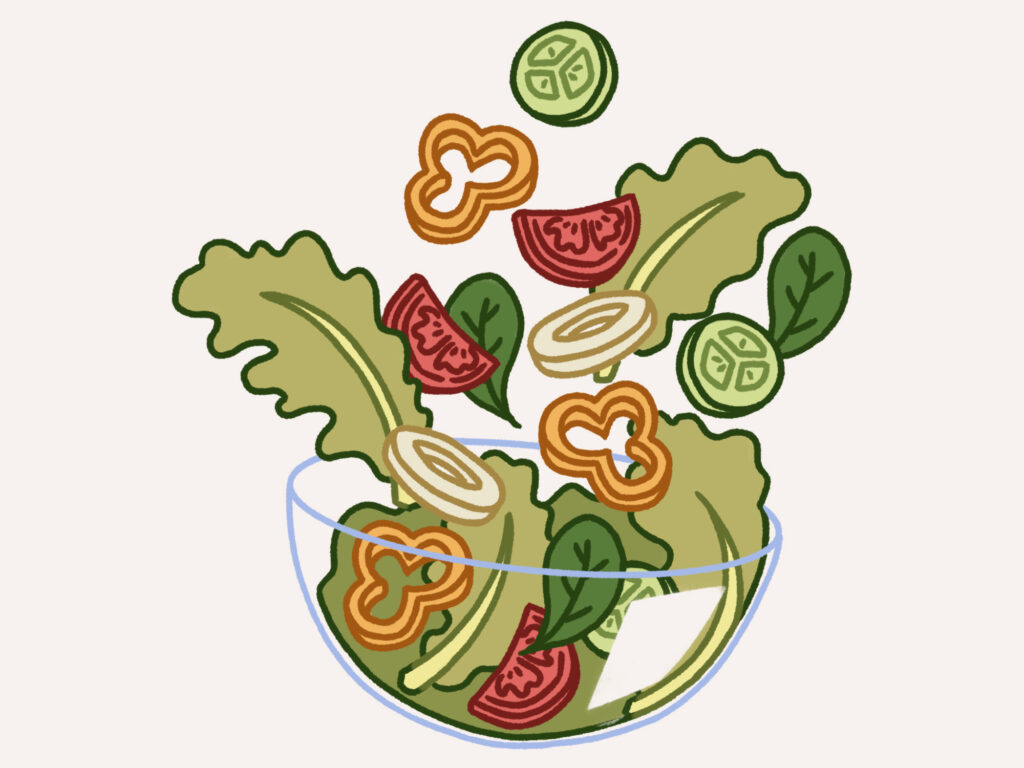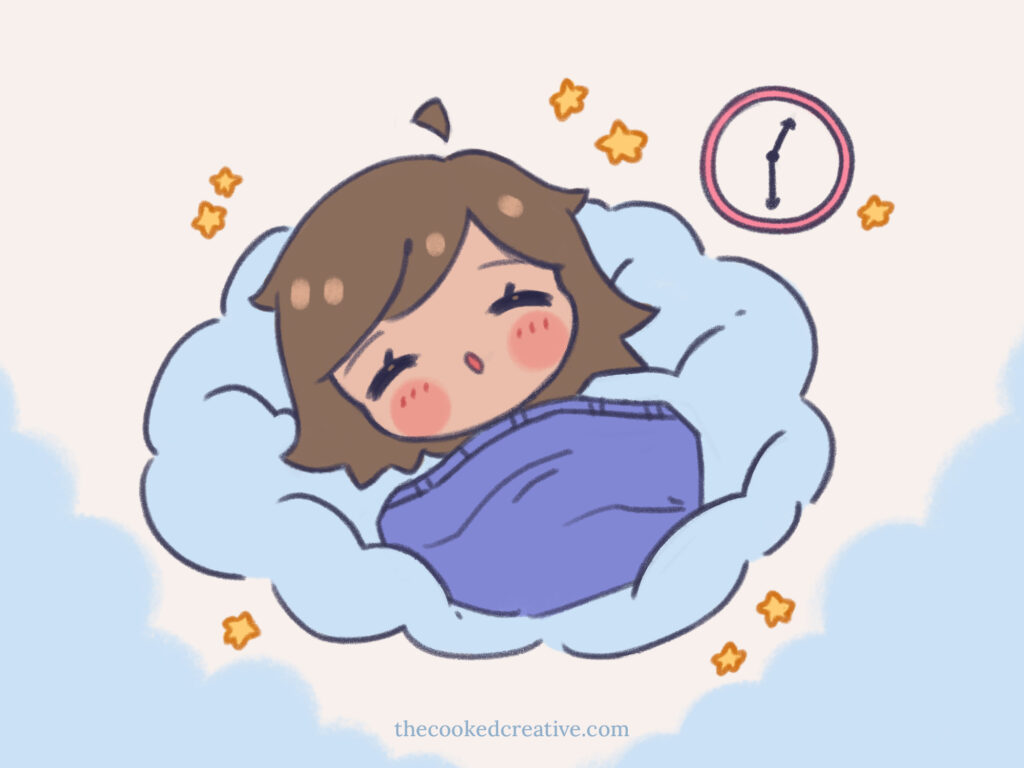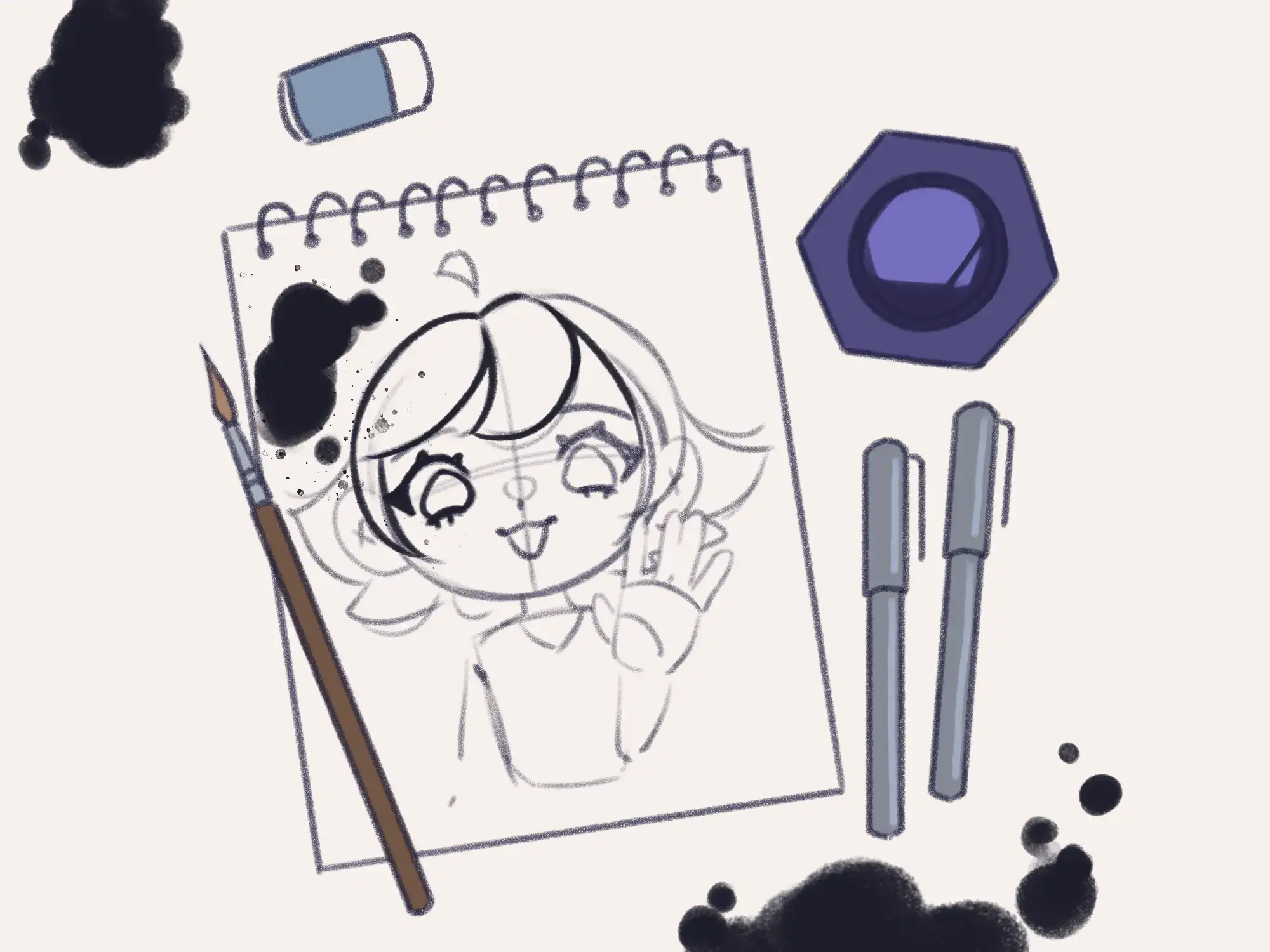
Surviving Inktober: Managing Mental Health During Art Challenges
October is a big month for artists, especially because of Inktober and similar art challenges floating around. It’s a time to push creative boundaries and join a global community of creators. With the excitement of daily prompts comes the pressure to constantly deliver. Keeping up with the challenge can be thrilling at the start but it can quickly lead to stress and feelings of overwhelm as the days go by.
It’s easy to get caught up in the momentum and overlook the toll that daily creative output can take on your mental health. Burnout, self-doubt, and even anxiety can creep in when you’re focused on hitting every prompt perfectly.
That is why it’s so important to protect your mental well-being throughout the challenge. In this post, I’ll share practical tips to help you manage the pressures of inktober and similar art challenges, so you can have enough energy to tackle the challenge while keeping your mental health intact.
Understanding the Pressure
Inktober is an incredible opportunity for growth, but it also comes with its own set of pressures that can weigh heavily on artists. The combination of wanting to do high-quality work plus it being a daily challenge often leads to common struggles like self-imposed stress, which can quickly drain the fun and creativity from the process.
Common Struggles
One of the biggest pressures is the looming threat of creative block. With a new prompt every day, it’s hard to keep the creative juices going without feeling overwhelmed. Some days you might find yourself staring at a blank page or canvas which can leave you frustrated or disappointed in yourself.
The feeling of being rushed is another common source of stress. Many artists hold full-time jobs, go to school, have kids and a family to take care of, or have other responsibilities, and finding the time to draw every single day can become overwhelming. Perfectionism often amplifies this pressure, you might feel the desire to make impeccable flawless museum-worthy work can make the challenge feel even more daunting. Instead of enjoying the process, you might spend too much time on one piece, nitpicking every detail, or doubting the quality of your work.
On top of that, it’s easy to compare yourself to others, especially when social media is flooded with incredible inktober pieces. On the surface, other artists’ pieces can seem effortless, and “oh wow, they have been doing Inktober consistently for 3 weeks now, they must have their entire life figured out and they are incredibly talented, gifted even” which can chip away at your confidence. This creates a cycle of negative self-talk and makes it harder to keep going.
And then we have the infamous “missed prompt” dilemma. Many artists fear missing a day because it feels like failing the challenge. After skipping the day, many artists (I’m guilty of this too ;-;) may give up altogether, thinking they have fallen behind too far to catch up. The truth is, the pressure to be perfect and complete every single day can lead to unnecessary stress and take away from the creative spirit of Inktober.
Setting Realistic Goals
Instead of focusing on perfection or completing all 31 prompts, it’s more valuable to set personal goals that align with your development and growth as an artist. When the challenge is over, what do you want to get out of it? Do you want to improve your inking skills? Would you like to explore a new art style? Or maybe you would like to develop consistency in your art routine?, this can keep you grounded and motivated without the weight of unrealistic expectations. It’s much more fulfilling to look back at the end of the month and see how much you have learned, rather than stressing over how many prompts you have completed.
Having a source of motivation can also help you stay on track without feeling overwhelmed. This could be something as simple as rewarding yourself after a set number of prompts or it could be external like joining a community of artists who are also participating.
Challenge Modifications
If your life gets busy, flexibility in your goals is key. It’s okay to modify the challenge to suit your pace. I have some ideas for you down below to modify a standard 31-day prompt list of your choosing!
- Weekly prompts: Choose one prompt for each week of October, this way you’ll have 5 prompts to develop over a week.
- Random Selection: Pick 10 (or any number you find sustainable) prompts randomly and work on them throughout the month. I like to use a spin-the-wheel website to make it more fun!
- Prompt combinations: Combine 2 or more prompts into a single drawing. This way you only need to complete a few drawings, but covering multiple prompts.
- Bingo card: Create a bingo card with a selection of prompts. Select randomly or pick prompts yourself, then mark them off when you’re done. Aim for traditional bingo patterns like horizontal, vertical, or diagonal.
Plan for Breaks and Rest
One of the easiest ways to burn out during Inktober is over-committing. It’s tempting to dedicate every spare moment to completing each prompt, but it’s important not to book your entire schedule around the challenge. Art should be an enjoyable part of your day, not an obligation that consumes all your free time. By leaving room for downtime, you’ll be able to recharge, keep your creativity flowing, and maintain balance in your life.
To prevent burnout, plan rest days in advance. Instead of waiting until you’re entirely drained, schedule a couple of intentional rest days during the month. It could be once a week, every few days, or whenever you feel like you need a break—what matters is allowing yourself space to breathe.
Breaks and rest are just as important as the art itself. They help keep you mentally and physically healthy throughout the challenge, allowing you to enjoy the process and maintain enthusiasm for your work.
Manage Stress and Overwhelm
How do you get over comparing yourself to others? When Instagram is full of beautiful art by countless artists who are doing the same challenge, This is the time to laser-focus on your personal goals. What matters most is your own personal and creative growth, not how your art measures to someone else’s. You cannot compare your goal of “I want to be more consistent with my art” to someone else’s “I just want to get through 31 prompts”. Or your “I want to improve my inking skills” to someone else’s “ I want to be better at sketching”, apples and oranges. Compare your current work to your past work, that is now you notice the change. If you focus on your path and recognize that you have a unique voice that makes your art special, working on your own set of objectives, you can start to look at others’ art and cheer them on their path and see how their art is equally special as yours.
Don’t forget to take time to celebrate your progress. inktober isn’t about perfection, it’s about pushing yourself creatively and exploring new ideas. Celebrate your small wins, like finishing a piece, trying a new technique, or even just sitting down to draw when you don’t feel like it. These moments of progress no matter how small, are achievements worth acknowledging. I like to write these small wins on a sticky note and keep them on my desk. it motivates me to keep pushing myself to where I’m learning and not feeling burnt out. By focusing on growth and not flawlessness, you’ll reduce stress and feel more positive about your work throughout the challenge.
Seek Support from the Community
Participating in these October challenges does not have to be a solo journey. One of the best ways to stay motivated and emotionally grounded is to share your experience with other artists who are also going through the challenge. Knowing that others are facing similar challenges helps create a sense of community and reminds you that you’re not alone.
Engaging with other artists can be a powerful way to stay inspired and motivated through the month, commenting on other’s work, offering feedback when others are asking for it, or simply sharing your progress and thoughts on it can give you an atmosphere of mutual support. Having someone to hold you accountable, whether it’s a friend or a group of fellow artists, can help you stay on track.
If you don’t have an in-person community, there are plenty of online communities where artists come together to share their experiences with the challenge. By joining these communities, you’ll not only find inspiration but also build connections with like-minded artists who understand the pressure and the joy of participating in a month-long challenge.
It’s Okay to Pause or Stop
It’s important to listen to your mind and recognize when you need a break. If you find yourself feeling stressed, creatively drained, or mentally exhausted, it’s okay to step away from the challenge. Pausing to take care of yourself doesn’t mean you’re giving up, it means you’re prioritizing your well-being, which is far more important than forcing yourself to push through the discomfort. Your mental health should always come first. Completing all 31 prompts isn’t worth sacrificing your peace of mind. If the challenge begins to take a toll on your mental health, it’s a sign you might have to reassess your approach. Taking a break or stopping altogether doesn’t make you any less of an artist, it shows that you’re in tune with your own needs and you’re making the necessary decisions to support your long-term creative health.
It’s also crucial to reframe what “failure” means. Skipping a few prompts is not a failure, see it as an opportunity to reflect on your journey so far. Maybe you’ve learned something new about your process, discovered what your boundaries are, figured out what pacing is sustainable for you, or found ways to manage your time better. Every experience, whether you finish it or not, is a chance to gain insight into your artistic practice.
Signs of burnout and mental fatigue:
- Feeling constantly tired
- Decreased motivation
- Difficulty concentrating
- Prolonged art block
- Procrastination
- Neglecting Self-Care
- Feeling cynical or negative
- Sleep disturbances
These symptoms can sneak up on you, especially when you’re so focused on finishing the challenge. Recognizing the signs early and permitting yourself to pause will ensure that when you do create, you’re doing so from a place of passion and inspiration instead of exhaustion.
Art Challenges You Can Take Part In
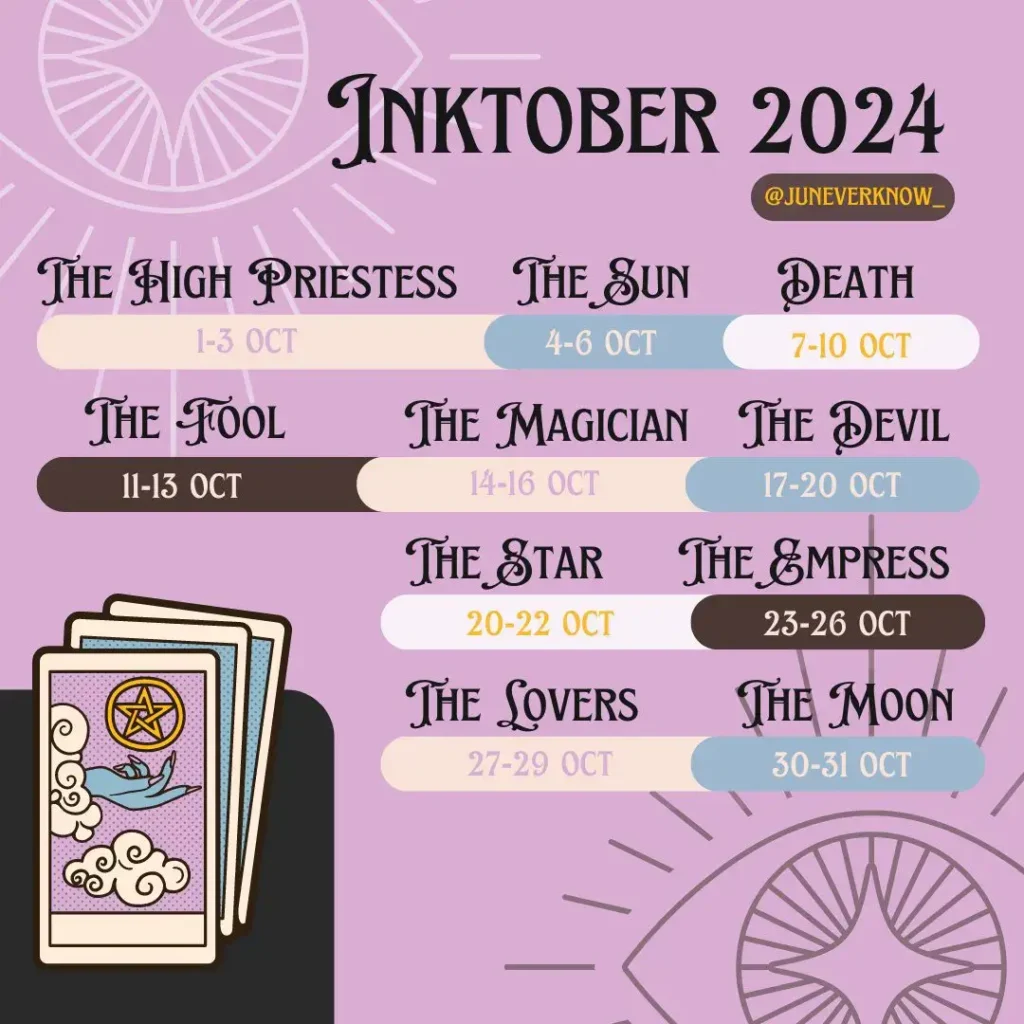
Tarot-themed list by June on twitter.
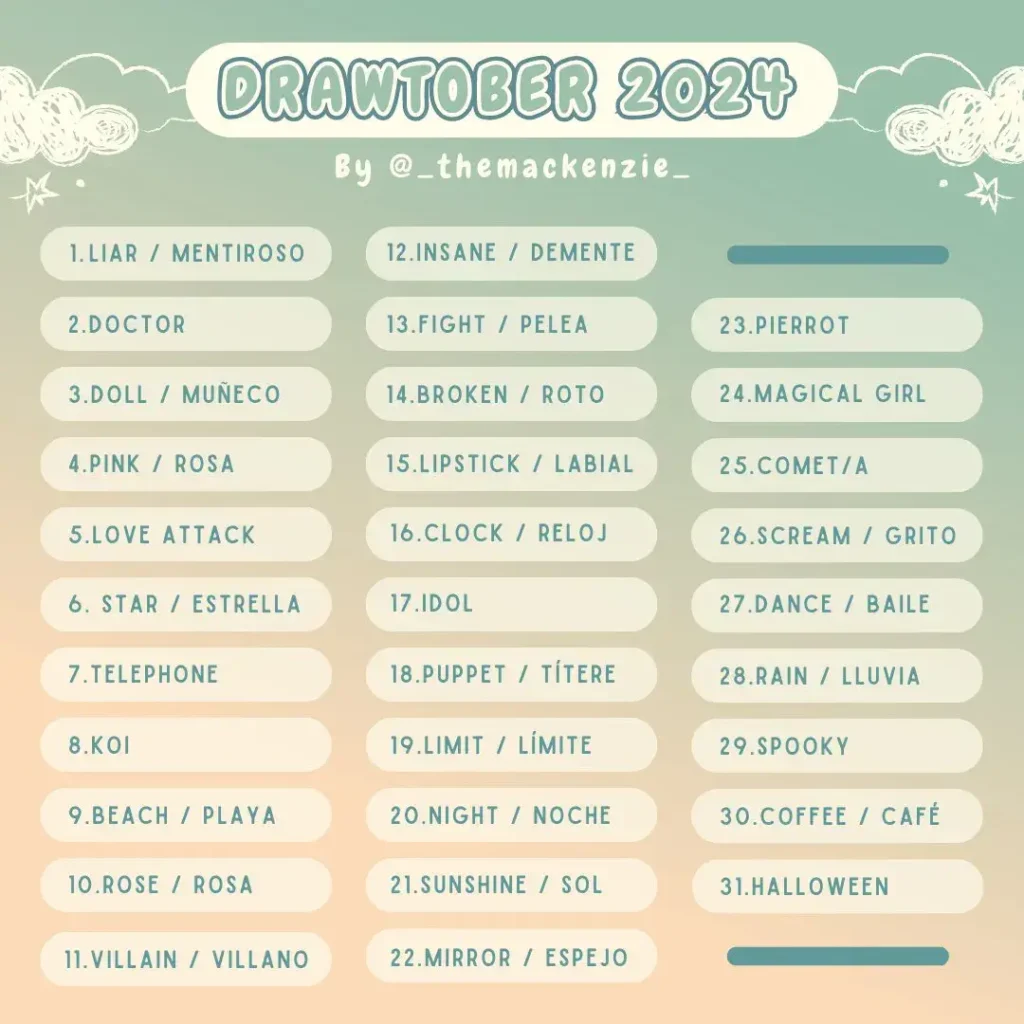
Spanish/English Drawtober by Mackency on Twitter.
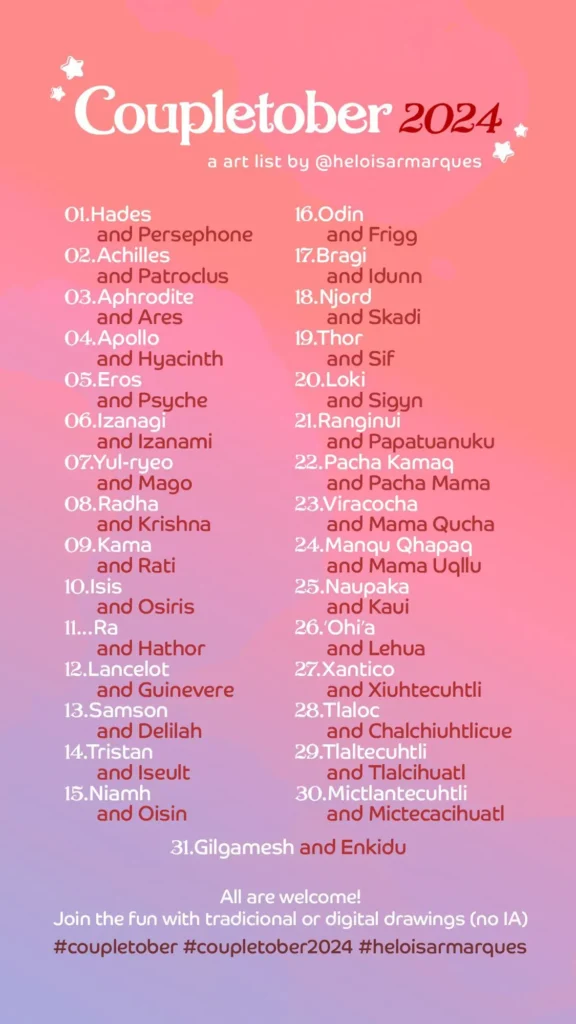
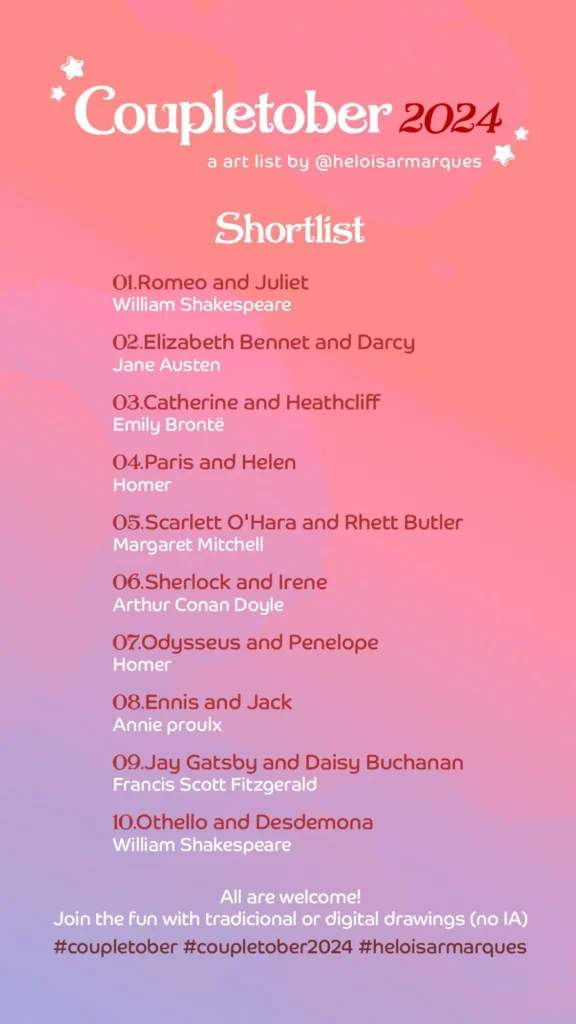
Coupletober (featuring a shortlist) by Heloisa on Bluesky.
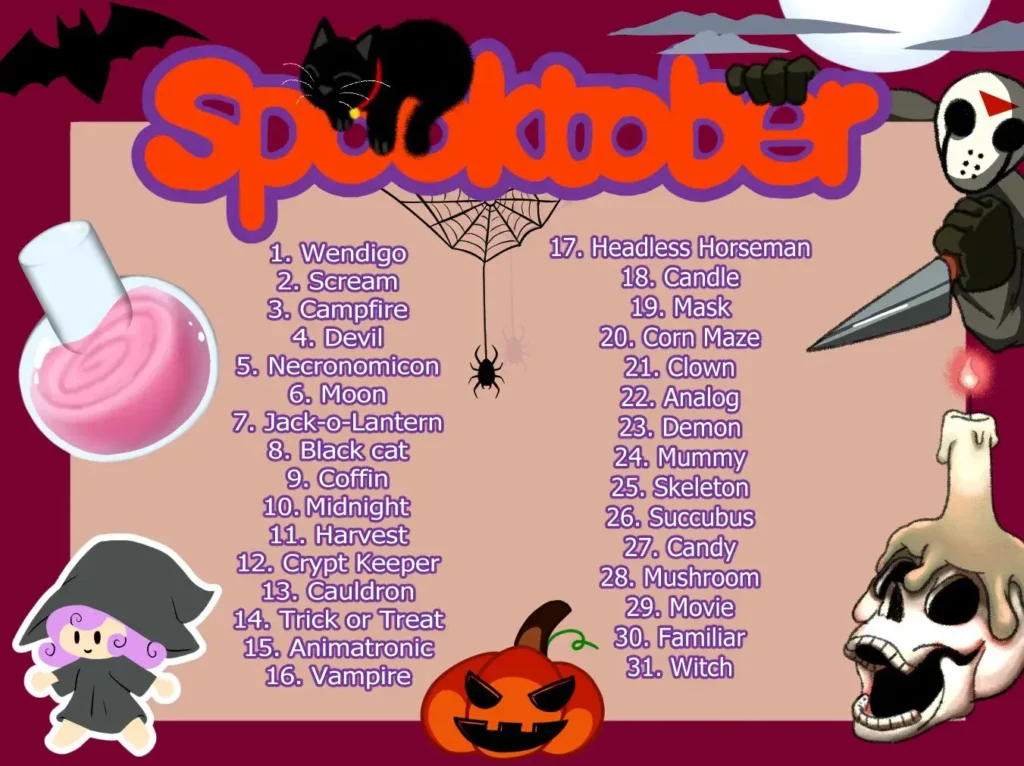
Spooktober by Slop_Dop on twitter
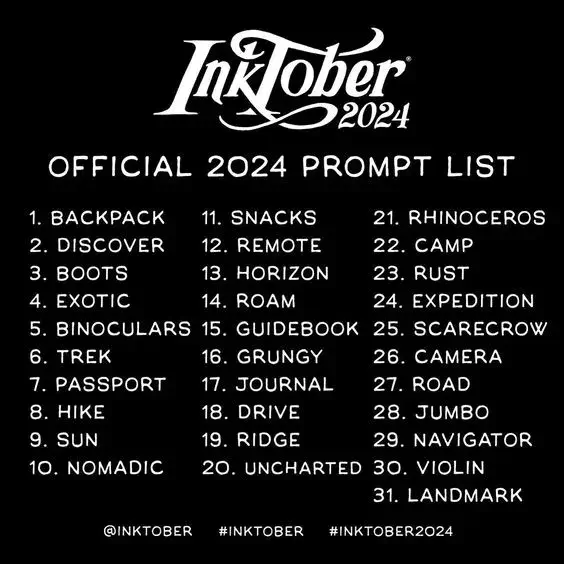
Inktober by Inktober on twitter
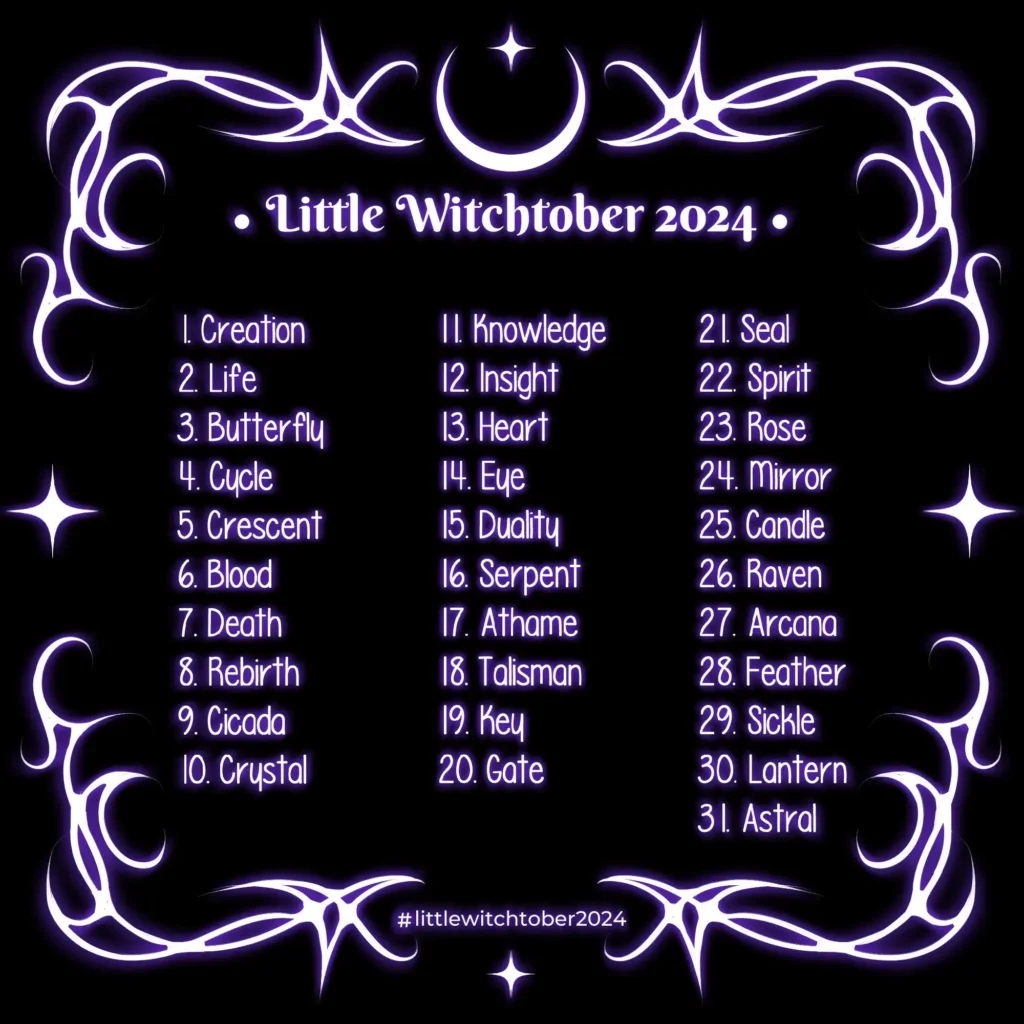
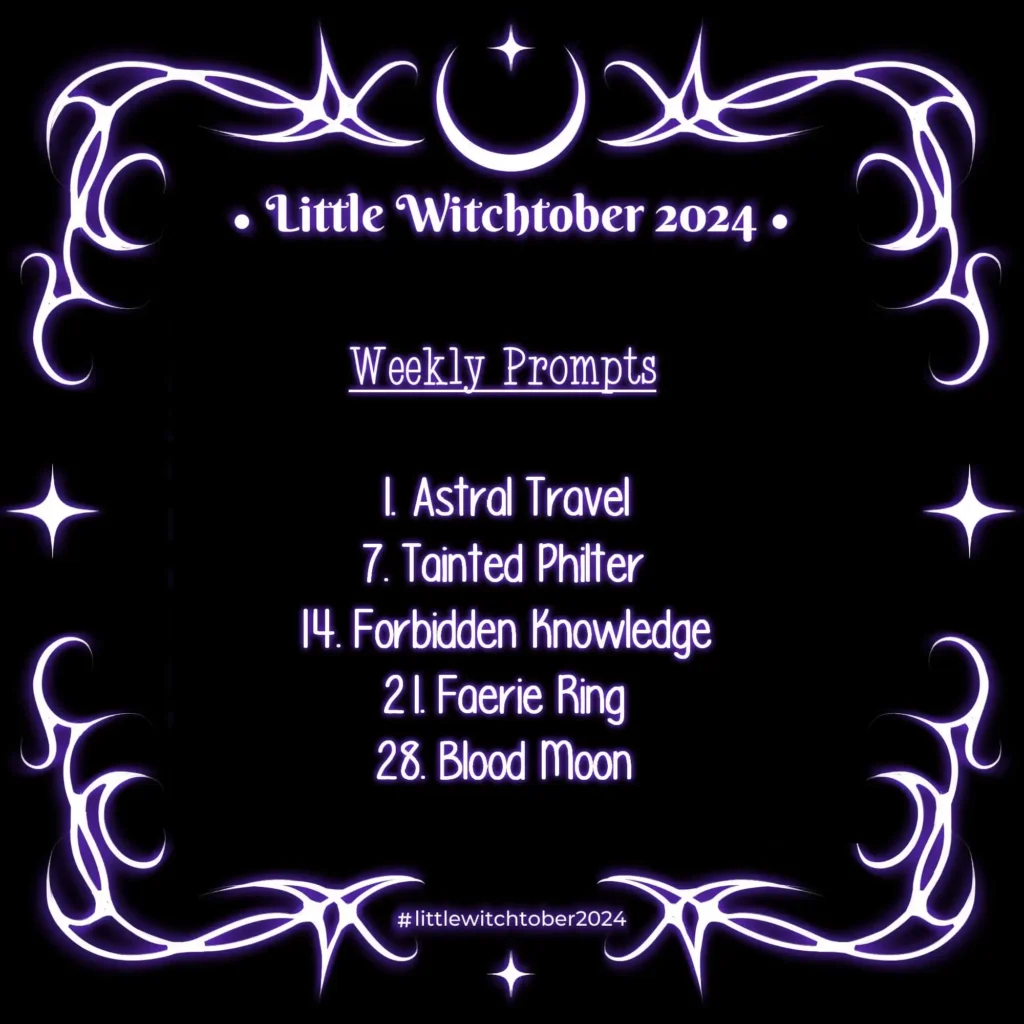
Little Witchtober (featuring a shortlist) by LittleWitch Lia on twitter
In Summary
Inktober should be an exciting and enriching experience, not a stressful one. Remember, prioritizing your mental health is essential to making the most of this creative challenge. By setting achievable goals, incorporating rest, and leaning on the support of your artistic community, you can ensure that Inktober remains an enjoyable and inspiring journey rather than a source of burnout.
I encourage you to take a moment to reflect on your approach to managing stress during art challenges. What strategies have you found effective in maintaining your mental well-being while tackling ambitious projects? Sharing your ideas could be helpful for others navigating similar situations!
If this article made things easier for you, I’d love it if you shared it with your friends and anyone who might need it!
Dont forget to follow me on social media for fun sneak peeks, behind the scenes and art! links on the sidebar.

I created a FREE Art Challenge workbook and checklist to help you out this season!
join my newsletter to gain access to my Freebie Library! You’ll find the workbook alongside stickers, wallpapers, checklists, templates, and more.
Feeling Inspired? Here’s Some Extra Fun Stuff!
- Top 10 Ways to Maximize Your 10-Minute Work Breaks
- Quick Guide to Natural Energy Drinks That Won’t Crash You (+ recipes)
- 8 Inspiring Tips to Create a Healthier, Balanced Autumn Routine



